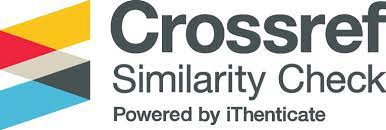The impact of the economic disruption caused by the Covid-19 pandemic on the liquidity of enterprises
DOI:
https://doi.org/10.18778/2391-6478.1.45.05Keywords:
Covid-19 pandemic, economic shock, financial liquidityAbstract
The purpose of the article. The purpose of the article is to analyze the impact of rapid changes in the economic environment caused by the Covid-19 pandemic on the level of liquidity. The analysis will be carried out in broad terms, i.e. for non-financial companies in Poland, and in narrower terms, i.e. for non-financial companies in the section of wholesale and retail trade; repair of motor vehicles, including motorcycles, as well as for companies representing the clothing and footwear sector on the Warsaw Stock Exchange (WIG-clothing). The article verifies the research hypothesis stating whether non-financial companies in Poland, as well as non-financial companies from the wholesale and retail trade section and companies from the clothing and footwear sector listed on the Warsaw Stock Exchange (WIG-clothing), have experienced deterioration in liquidity.
Methodology. The analysis and evaluation of the impact of the disruption in the economy caused by the Covid-19 pandemic on the liquidity of enterprises was carried out on the basis of selected statistics – financial indicators for non-financial enterprises with books of accounts, where the number of employees was 50 or more in general and for the section of wholesale and retail trade; repair of motor vehicles, including motorcycles and companies from the WIG- clothes index listed on the Warsaw Stock Exchange. The study used as research methods: a review of the literature on the subject, an analysis of selected statistical data from the Central Statistical Office, an analysis of selected financial indicators used in assessing the financial condition of enterprises, and deductive reasoning in formulating the conclusions from the research results obtained. The analysis was conducted for the years 2018–2023 using financial data from the Notoria Serwis database and statistical data from the Central Statistical Office – Local Data Bank.
Results of the research. The results of the study show that the Covid-19 pandemic did not cause any negative effects on financial liquidity in the surveyed group of non-financial enterprises employing 50 people or more, nor in enterprises included in section G in the economy and in the group of companies in the WIG-clothes index listed on the Warsaw Stock Exchange.
Downloads
References
Abbas, A. A., Hadi, A. A., & Muhammad, A. A. (2021). Measuring the Extent of Liquidity's Impact on the Financial Structure. International Journal of Multicultural and Multireligious Understanding, 8(6), 365–389. https://doi.org/10.18415/ijmmu.v8i6.2827
Google Scholar
Abdelaziz, H., Rim, B., & Helmi, H. (2020). The Interactional Relationships Between Credit Risk, Liquidity Risk and Bank Profitability in MENA Region. Global Business Review, 23(3), 1–11. https://doi.org/10.1177/0972150919879304
Google Scholar
DOI: https://doi.org/10.1177/0972150919879304
Adamczyk, M. (2012). Współczesny kryzys finansowy – przyczyny i konsekwencje dla gospodarki światowej. Prace i Materiały Instytutu Handlu Zagranicznego Uniwersytetu Gdańskiego, 31(1), 13–29.
Google Scholar
Alotaibi, E., & Khan, A. (2022). Impact of Covid-19 on the Hospitality Industry and Responding to Future Pandemic through Technological Innovation. Procedia Computer Science, 204, 844–853. https://doi.org/10.1016/j.procs.2022.08.102
Google Scholar
DOI: https://doi.org/10.1016/j.procs.2022.08.102
Amnim, O. E. L., Aipma, O. P. C., & Obiora, C. F. (2021). Impact of Covid-19 Pandemic on Liquidity and Profitability of Firms in Nigeria. International Journal of Academic Research in Business and Social Sciences, 11(3), 1331–1344. https://doi.org/10.6007/IJARBSS/v11-i3/9229
Google Scholar
DOI: https://doi.org/10.6007/IJARBSS/v11-i3/9229
Bednarski, L., & Waśniewski, T. (red.). (1996). Analiza finansowa w zarządzaniu przedsiębiorstwem. Fundacja Rozwoju Rachunkowości w Polsce.
Google Scholar
Bukowski, S. (2011). Globalna recesja i kryzys finansowy czy kryzys ekonomii? Acta Universitatis Lodziensis. Folia Oeconomica, 248, 23–37. http://hdl.handle.net/11089/576
Google Scholar
Burzała, M. M. (2013). Efekty zarażania wybranych giełd światowych w czasie kryzysu finansowego 2007–2009 – analiza ukrytych czynników. Zeszyty Naukowe Uniwersytetu Szczecińskiego. Finanse, Rynki Finansowe, Ubezpieczenia, 63, 51–64.
Google Scholar
Cicirko, T. (red.). (2010). Podstawy zarządzania płynnością finansową przedsiębiorstwa. Oficyna Wydawnicza Szkoła Główna Handlowa w Warszawie.
Google Scholar
Chmielewski, M., & Pioch, J. (2020). Wpływ kryzysu pandemii COVID-19 na sytuację finansową przedsiębiorstw w Polsce na przykładzie LPP S.A. Przestrzeń, Ekonomia, Społeczeństwo, 18(II), 101–116.
Google Scholar
Clampit, J., Hasija, D., Dugan, M., & Gamble, J. (2021). The Effect of Risk, R&D Intensity, Liquidity, and Inventory on Firm Performance during COVID-19: Evidence from US
Google Scholar
DOI: https://doi.org/10.3390/jrfm14100499
Manufacturing Industry. Journal of Risk and Financial Management, 14(10), 1–16. https://doi.org/10.3390/jrfm14100499
Google Scholar
DOI: https://doi.org/10.3390/jrfm14100499
Conte, A., Lecca, P., Salotti, S., & Sakkas, S. (2020). The territorial economic impact of COVID-19 in the EU. A RHOMOLO analysis. Territorial Development Insights Series, JRC121261, European Commission.
Google Scholar
Czajkowska, A., Bolek, M., & Pluskota, A. (2024). How the COVID-19 shock influenced companies listed on the WSE and how they managed their liquidity. Financial Internet Quarterly, 20(1), 39–50. https://doi.org/10.2478/fiqf-2024-0004
Google Scholar
DOI: https://doi.org/10.2478/fiqf-2024-0004
Czech, K., Karpio, A., Wielechowski, M., Woźniakowski, T., & Żebrowska-Suchodolska, D. (2020). Polska gospodarka w początkowym okresie pandemii COVID-19. Wydawnictwo SGGW.
Google Scholar
Demmou, L., Franco, G., Calligaris, S., & Dlugosch, D. (2022). Liquidity Shortfalls during the COVID 19 Outbreak: Assessment and Policy Responses. Economie et Statistique / Economics and Statistics, 532–533, 47–61. https://doi.org/10.24187/ecostat.2022.532.2070
Google Scholar
DOI: https://doi.org/10.24187/ecostat.2022.532.2070
Drop, J. (2001). Rodzaje szoków gospodarczych a unia walutowa. Zeszyty Naukowe Akademii Ekonomicznej w Krakowie, 589, 21–35.
Google Scholar
Gałecka, A., & Nestoruk, M. (2024). Pandemia Covid-19 a kondycja finansowa przedsiębiorstw niefinansowych w Polsce. Rozprawy Społeczne/Social Dissertations, 18(1), 54–73. https://doi.org/10.29316/rs/178440
Google Scholar
DOI: https://doi.org/10.29316/rs/178440
Geise, A. (2018). Asymetria reakcji gospodarek na cenowe szoki naftowe na przykładzie państw UE. Wydanictwo Naukowe Uniwersytetu Mikołaja Kopernika.
Google Scholar
Głowa, K. (2023). Wpływ COVID-19 na kondycję finansową i wycenę giełdową spółek WIG.GAMES5. Studia i Materiały Wydziału Zarządzania Uniwersytetu Warszawskiego, 2(39), 4–26. https://doi.org/10.7172/1733-9758.2023.39.1
Google Scholar
DOI: https://doi.org/10.7172/1733-9758.2023.39.1
Gos, W. (2004). Rachunek przepływów pieniężnych w świetle krajowego standardu rachunkowości. Wydawnictwo Difin.
Google Scholar
Gourinchas, P. O., Kalemli-Ozcan, S., Penciakova, V., & Sander, N. (2020). COVID-19 and SME failures. Working Paper, 2020-21a, Federal Reserve Bank of Atlanta. https://doi.org/10.29338/wp2020-21
Google Scholar
DOI: https://doi.org/10.5089/9781513557748.001
Guerini, M., Nesta, L., Ragot, X., & Schiavo, S. (2021). Firm liquidity and solvency under the COVID-19 lockdown in France. Sciences Po, OFCE, 76, 1–20.
Google Scholar
Hoeven, R., & Roosjen, Y. (2021). Effects of the COVID-19 pandemic on disclosures in passenger airlines’ financial statements. Maandblad voor Accountancy en Bedrijfseconomie, 95(11/12), 397–411. https://doi.org/10.5117/mab.95.75536
Google Scholar
DOI: https://doi.org/10.5117/mab.95.75536
Hoshi, T., Kawaguchi, D., & Ueda, K. (2023). Zombies, again? The COVID-19 business support programs in Japan. Journal of Banking and Finance, 147, 1–17. https://doi.org/10.1016/j.jbankfin.2022.106421
Google Scholar
DOI: https://doi.org/10.1016/j.jbankfin.2022.106421
Hübner, W. (2020). Świat, Chiny i globalizacja: bieżące tendencje i szok epidemii. Kwartalnik Nauk o Przedsiębiorstwie, 54(1), 5–19. https://doi.org/10.33119/KNoP.2020.54.1.1
Google Scholar
DOI: https://doi.org/10.33119/KNoP.2020.54.1.1
Hyży, M. L. (2023). Wpływ pandemii COVID-19 na wyniki finansowe wybranych przedsiębiorstw branży deweloperskiej i motoryzacyjnej. Zeszyty Teoretyczne Rachunkowości, 47(1), 39–54. https://doi.org/10.5604/01.3001.0016.2906
Google Scholar
DOI: https://doi.org/10.5604/01.3001.0016.2906
Jaroch, K. (2023). Wpływ pandemii COVID-19 na rentowność przedsiębiorstwa LPP S.A. W: Humanistyka i nauki społeczne. Doświadczenia. Konteksty. Wyzwania, tom 17. Exante Wydawnictwo Naukowe.
Google Scholar
Jędrzejowska, K., & Wróbel, A. (2021). Wielki lockdown i deglobalizacja: wpływ pandemii COVID-19 na gospodarkę światową. W Rocznik strategiczny 2020/21. Przegląd sytuacji politycznej, gospodarczej i wojskowej w środowisku międzynarodowym Polski (s. XX-XX). Wydawnictwo Naukowe Scholar.
Google Scholar
Karim, M. R., Shetu, S. A., & Razia, S. (2021). COVID-19, liquidity and financial health: Empirical evidence from South Asian economy. Asian Journal of Economics and Banking, 5(3), 307–323. https://doi.org/10.1108/AJEB-03-2021-0033
Google Scholar
DOI: https://doi.org/10.1108/AJEB-03-2021-0033
Kłoczko, A., & Kołoszko-Chomentowska, Z. (2022). Analiza finansowa w ocenie kondycji finansowej przedsiębiorstwa Mercator Medical S.A. – implikacje kryzysu Covid-19. Akademia Zarządzania, 6, 28-41. https://doi.org/10.24427/az-2022-0054
Google Scholar
Konecka, S., & Łupicka, A. (2022). Logistykacja gospodarki światowej. Wydawnictwo Uniwersytetu Ekonomicznego w Poznaniu. https://doi.org/10.18559/978-83-8211-106-4
Google Scholar
DOI: https://doi.org/10.18559/978-83-8211-106-4
Kraska, E. M. (2022). Wpływ pandemii COVID-19 na kondycję finansową przedsiębiorstw w Polsce. Przegląd Prawno-Ekonomiczny, 2, 79–95. https://doi.org/10.31743/ppe.13241
Google Scholar
DOI: https://doi.org/10.31743/ppe.13241
Kraska, E. M., & Kot, J. (2024). Wpływ pandemii koronawirusa na sytuację finansową branży budowlanej. Przegląd Prawno-Ekonomiczny, 2, 75–98. https://doi.org/10.31743/ppe.16606
Google Scholar
DOI: https://doi.org/10.31743/ppe.16606
Kruczek, P. (2023). Płynność finansowa spółek odzieżowych w okresie pandemii COVID-19. Zeszyty Naukowe Polskiego Towarzystwa Ekonomicznego w Zielonej Górze, 19, 89–107. https://doi.gov/10.26366/PTE.ZG.2023.247
Google Scholar
Kuciński, A. (2022). Ocena płynności finansowej w przedsiębiorstwie: uwagi terminologiczne i metodologiczne. Przedsiębiorczość Edukacja, 18(2), 180–191. https://doi.org/10.24917/20833296.182.11
Google Scholar
DOI: https://doi.org/10.24917/20833296.182.11
Kuciński, A. (2024). Płynność finansowa przedsiębiorstwa jako wyznacznik jego kondycji finansowej. W M. Sołtysiak (red.), Kondycja finansowa podmiotów gospodarczych w efekcie nieprzewidywalnych zawirowań na rynku. Oficyna Wydawnicza Politechniki Rzeszowskiej.
Google Scholar
Kuciński, A. (2017). Strategie zarządzania kapitałem obrotowym netto w przedsiębiorstwie na przykładzie wybranych spółek notowanych na GPW w Warszawie. Studia i Prace Wydziału Ekonomicznego, 14, 75–87.
Google Scholar
Kuciński, A. (2021). Utrzymanie płynności finansowej w przedsiębiorstwie jako warunek kontynuacji jego działalności na przykładzie Zakładów Mięsnych Henryk Kania S.A. Finanse i Prawo Finansowe, 1(29), 79–94. https://doi.org/10.18778/2391-6478.1.29.05
Google Scholar
DOI: https://doi.org/10.18778/2391-6478.1.29.05
Kusumawati, E., & Setiawan, A. (2019). The effect of managerial ownership, institutional ownership, company growth, liquidity, and profitability on company value. Riset Akuntansi Dan Keuangan Indonesia, 4(2), 136–146. https://journals.ums.ac.id/index.php/reaksi/article/view/8574/4814
Google Scholar
DOI: https://doi.org/10.23917/reaksi.v4i2.8574
Kusak, A. (2006). Płynność finansowa: analiza i sterowanie. Wydawnictwo Naukowe Wydziału Zarządzania Uniwersytetu Warszawskiego.
Google Scholar
Martami, I., & Panji, I. (2020). Profitability and Liquidity on Firm Value and Capital Structure as Intervening Variable. International Research Journal of Management, IT & Social Sciences, 7(1), 116-127. https://doi.org/10.21744/irjmis.v7n1.828
Google Scholar
DOI: https://doi.org/10.21744/irjmis.v7n1.828
Michalski, G. (2010). Strategiczne zarządzanie płynnością finansową w przedsiębiorstwie. CeDeWu.
Google Scholar
Mohanty, B., & Mehrota, S. (2018). Relationship between Liquidity and Profitability: An Exploratory Study of SMEs in India. Emerging Economy Studies, 4(2), 1-13. https://doi.org/10.1177/2394901518795
Google Scholar
DOI: https://doi.org/10.1177/2394901518795069
Nazarczuk, J. M., Cicha-Nazarczuk, M., & Szczepańska, K. (2022). Wrażliwość polskiej gospodarki na zmiany wywołane pandemią COVID-19. Instytut Badań Gospodarczych. https://doi.org/10.24136/eep.mon.2022.10
Google Scholar
DOI: https://doi.org/10.24136/eep.mon.2022.10
Nehrebecki, M. (2023). Zombification in Poland in particular during COVID-19 pandemic and low interest rates. Bank i Kredyt, 54(2), 153–190. https://doi.org/10.5604/01.3001.0054.5702
Google Scholar
DOI: https://doi.org/10.5604/01.3001.0054.5702
Nowak, E. (2017). Analiza sprawozdań finansowych. Polskie Wydawnictwo Ekonomiczne.
Google Scholar
Opler, T., Pinkowitz, L., Stulz, R., & Williamson, R. (1999). The Determinants and Implications of Corporate Cash Holdings. Journal of Financial Economics, 52(1), 3–46. https://doi.org/10.1016/S0304-405X(99)00003-3
Google Scholar
DOI: https://doi.org/10.1016/S0304-405X(99)00003-3
Piątek, E., & Moczydłowski, K. (2017). Wypłacalność a płynność finansowa – zależności. Finanse, Rynki Finansowe, Ubezpieczenia, 5(89/1), 119–130. https://doi.org/10.18276/frfu.2017.89/1-09
Google Scholar
DOI: https://doi.org/10.18276/frfu.2017.89/1-09
Piłat, A. (2018). (A)symetryczne szoki popytowe i podażowe w krajach Europy Środkowo-Wschodniej. Wiadomości Statystyczne, 2(681), 7–20.
Google Scholar
DOI: https://doi.org/10.5604/01.3001.0014.0621
Piosik, M. (2022). Fashion companies in Poland – The influence of COVID-19 on liquidity assessment. Central European Economic Journal, 9(56), 323–341. https://doi.org/10.1515/ceej-2018-0003
Google Scholar
DOI: https://doi.org/10.2478/ceej-2022-0019
Plichta, J., Sagan, A., & Plichta, G. (2022). Szoki egzogeniczne a kształtowanie relacji na rynku B2C z perspektywy struktury wartości konsumentów. Wydawnictwo Uniwersytetu Ekonomicznego w Krakowie.
Google Scholar
Shaharuddin, S. N. H., Mahmud, R., Mohd Azhari, N. K., & Perwitasari, W. (2021). Company performance during COVID-19: Impact of leverage, liquidity and cash flows. Environment-Behaviour Proceedings Journal, 6(17), 11–16. https://doi.org/10.21834/ebpj.v6i17.2878
Google Scholar
DOI: https://doi.org/10.21834/ebpj.v6i17.2878
Sienkiewicz, I. (2021). Wpływ pandemii COVID-19 na gospodarki wybranych krajów Unii Europejskiej. The Review of European Affairs, 5(1), 43–59. https://doi.org/10.51149/ROEA.1.2021.4
Google Scholar
DOI: https://doi.org/10.51149/ROEA.1.2021.4
Sierpińska, M., & Jachna, T. (2004). Ocena przedsiębiorstwa według standardów światowych. Wydawnictwo Naukowe PWN.
Google Scholar
Spoz, A., Skibińska-Fabrowska, I., Kotliński, G., & Żukowska, H. (2011). The impact of the COVID-19 pandemic on the financial performance of public companies in Poland. European Research Studies Journal, 24(4), 955–976. https://doi.org/10.35808/ersj/2645
Google Scholar
DOI: https://doi.org/10.35808/ersj/2645
Śliwa, M., & Kłosowska, A. (2022). Zmiana poziomu kredytowania przedsiębiorstw w Polsce w okresie pandemii COVID-19. Zeszyty Naukowe SGGW, Polityki Europejskie, Finanse i Marketing, 27(76), 99–110. https://doi.org/10.22630/PEFIM.2022.27.76.9
Google Scholar
DOI: https://doi.org/10.22630/PEFIM.2022.27.76.9
Taleb, N. N. (2007). The Black Swan: The Impact of the Highly Improbable. Random House.
Google Scholar
Wague, M. (2009). Międzynarodowe kryzysy gospodarcze i ich konsekwencje. Zeszyty Naukowe SGGW - Ekonomika i Organizacja Gospodarki Żywnościowej, 78, 81–94. https://doi.org/10.22630/EIOGZ.2009.78.84
Google Scholar
DOI: https://doi.org/10.22630/EIOGZ.2009.78.84
Wasilewski, M., & Zabolotnyy, S. (2016). Relacje rentowności i płynności finansowej w przedsiębiorstwach rolniczych. Finanse, Rynki Finansowe, Ubezpieczenia, 4(82/1), 277–286. https://doi.org/10.18276/frfu.2016.4.82/1-23
Google Scholar
DOI: https://doi.org/10.18276/frfu.2016.4.82/1-23
Wędzki, D. (2003). Strategie płynności finansowej przedsiębiorstwa – przepływy pieniężne a wartość dla właścicieli. Oficyna Ekonomiczna.
Google Scholar
Zuba, M. (2010). Zależność między rentownością a płynnością finansową spółdzielni mleczarskich w Polsce. Annales Universitatis Mariae Curie-Skłodowska. Sectio H. Oeconomia, 44(1), 263–273.
Google Scholar
Downloads
Published
How to Cite
Issue
Section
License

This work is licensed under a Creative Commons Attribution-NonCommercial-NoDerivatives 4.0 International License.














